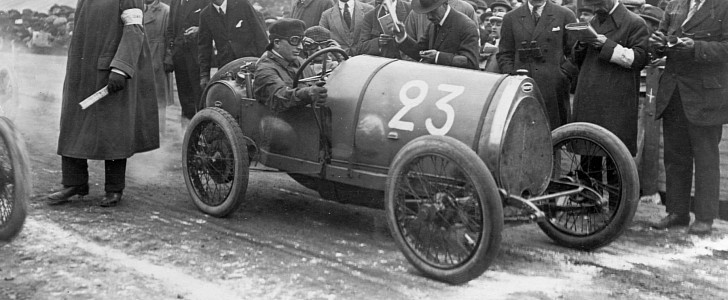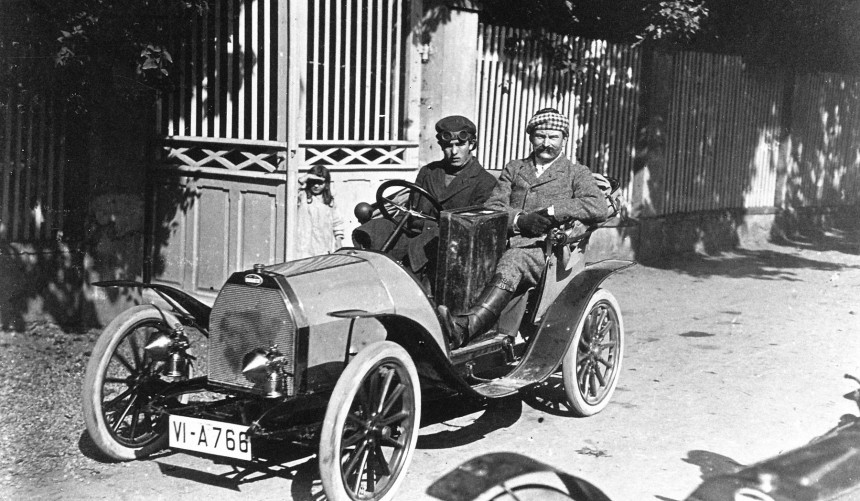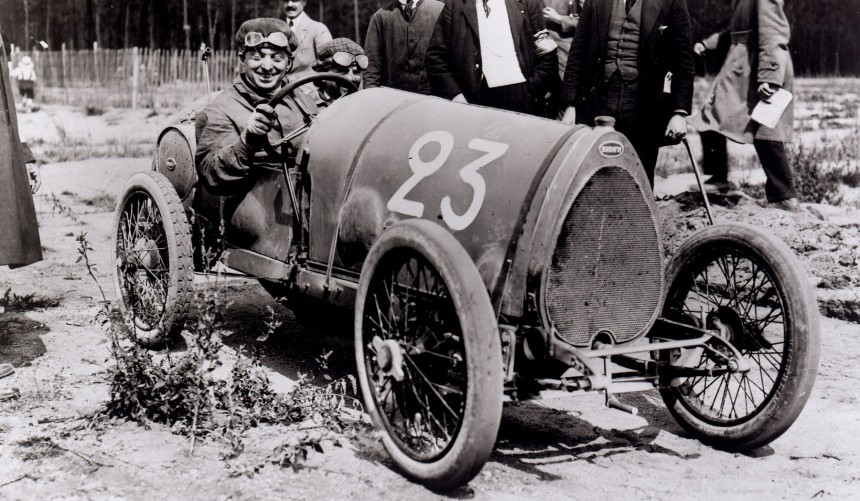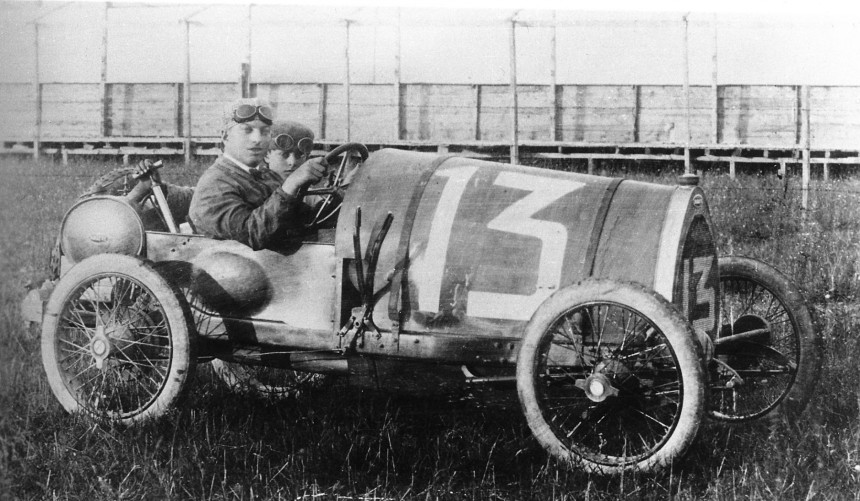In 1921, four race-enhanced Type 13s competed at the Grand Prix for Voiturettes in Brescia, Italy, obliterating the competition and finishing the race in the top four positions. The feat marked a turning point for Bugatti, as the small open-top racers would revolutionize motorsport in the coming years.
The Type 13 is considered by experts as the first "true Bugatti" car. It was first produced in 1910 at the new facility in Molsheim, which was part of the German Empire at the time.
The car was an evolution of Ettore Bugatti’s first prototype, the Type 10 he built in his basement between 1908 and 1909 while he was chief engineer at Deutz Gasmotoren Fabrik in Cologne, Germany.
The company built five Type 13s in 1910 and entered one in the French Grand Prix held at Le Mans one year later. Although it looked more like a toy car when compared to the competition, the nimble little race car took second place after seven grueling hours of racing.
Legend has it that when the First World War broke out, Ettore took two completed Type 13s with him to Milan while the other three were disassembled, and their parts were buried near the Molsheim factory.
After the war ended, Bugatti returned to the Alsace region, which was now part of France, unearthed the parts, and worked relentlessly to optimize the model.
He mainly concentrated on the engine, which initially had a 1.35-liter displacement, increasing it slightly in 1919 and adding a vertical shaft and a four-valve cylinder head—one of the first of this type ever built.
The car also featured white alloy crankshaft bearings and pistons, a highly efficient fuel pump, and an additional pump that dosed oil onto certain engine components to reduce friction further. Bugatti also added a lightweight and easy-to-shift four-speed transmission that enabled the driver to change gears a lot faster.
In 1921, the Italian-born engineer increased the cylinder bore to 68 mm (2.6 inches), which expanded the displacement to a little under 1.5 liters.
Production car aside, he also worked on a racing version, building several units which featured increased compression ratio and carburetor flow rate, a magnetic dual ignition system with two spark plugs per combustion chamber, and ball bearings for the camshaft.
That year, he entered the new race cars into the Grand Prix for Voiturettes in Brescia, and all of them finished in the top four places, giving birth to a legendary race car which from that day on was called Type 13 "Brescia."
Although they were smaller and seemed more fragile than the competition, the 1,080-pound (490-kg) Brescias were capable of reaching a top speed of 93 mph (150 kph). That velocity was only achieved by much larger race cars of the era.
Due to their lightweight construction and excellent handling, the Type 13 Brescias obliterated the competition in the following years, becoming the most sought-after race cars of the period. Their success transformed Bugatti from a small company into one of the most successful carmakers of the 1920s.
The Type 13 was manufactured in Molsheim until 1926, with Bugatti selling around 2,000 units in total. This model laid the groundwork for the Type 35, a model that would later become one of the most successful race cars of all time, recording over 2,000 victories in various races across the globe.
The car was an evolution of Ettore Bugatti’s first prototype, the Type 10 he built in his basement between 1908 and 1909 while he was chief engineer at Deutz Gasmotoren Fabrik in Cologne, Germany.
The company built five Type 13s in 1910 and entered one in the French Grand Prix held at Le Mans one year later. Although it looked more like a toy car when compared to the competition, the nimble little race car took second place after seven grueling hours of racing.
After the war ended, Bugatti returned to the Alsace region, which was now part of France, unearthed the parts, and worked relentlessly to optimize the model.
He mainly concentrated on the engine, which initially had a 1.35-liter displacement, increasing it slightly in 1919 and adding a vertical shaft and a four-valve cylinder head—one of the first of this type ever built.
The car also featured white alloy crankshaft bearings and pistons, a highly efficient fuel pump, and an additional pump that dosed oil onto certain engine components to reduce friction further. Bugatti also added a lightweight and easy-to-shift four-speed transmission that enabled the driver to change gears a lot faster.
Production car aside, he also worked on a racing version, building several units which featured increased compression ratio and carburetor flow rate, a magnetic dual ignition system with two spark plugs per combustion chamber, and ball bearings for the camshaft.
That year, he entered the new race cars into the Grand Prix for Voiturettes in Brescia, and all of them finished in the top four places, giving birth to a legendary race car which from that day on was called Type 13 "Brescia."
Due to their lightweight construction and excellent handling, the Type 13 Brescias obliterated the competition in the following years, becoming the most sought-after race cars of the period. Their success transformed Bugatti from a small company into one of the most successful carmakers of the 1920s.
The Type 13 was manufactured in Molsheim until 1926, with Bugatti selling around 2,000 units in total. This model laid the groundwork for the Type 35, a model that would later become one of the most successful race cars of all time, recording over 2,000 victories in various races across the globe.










